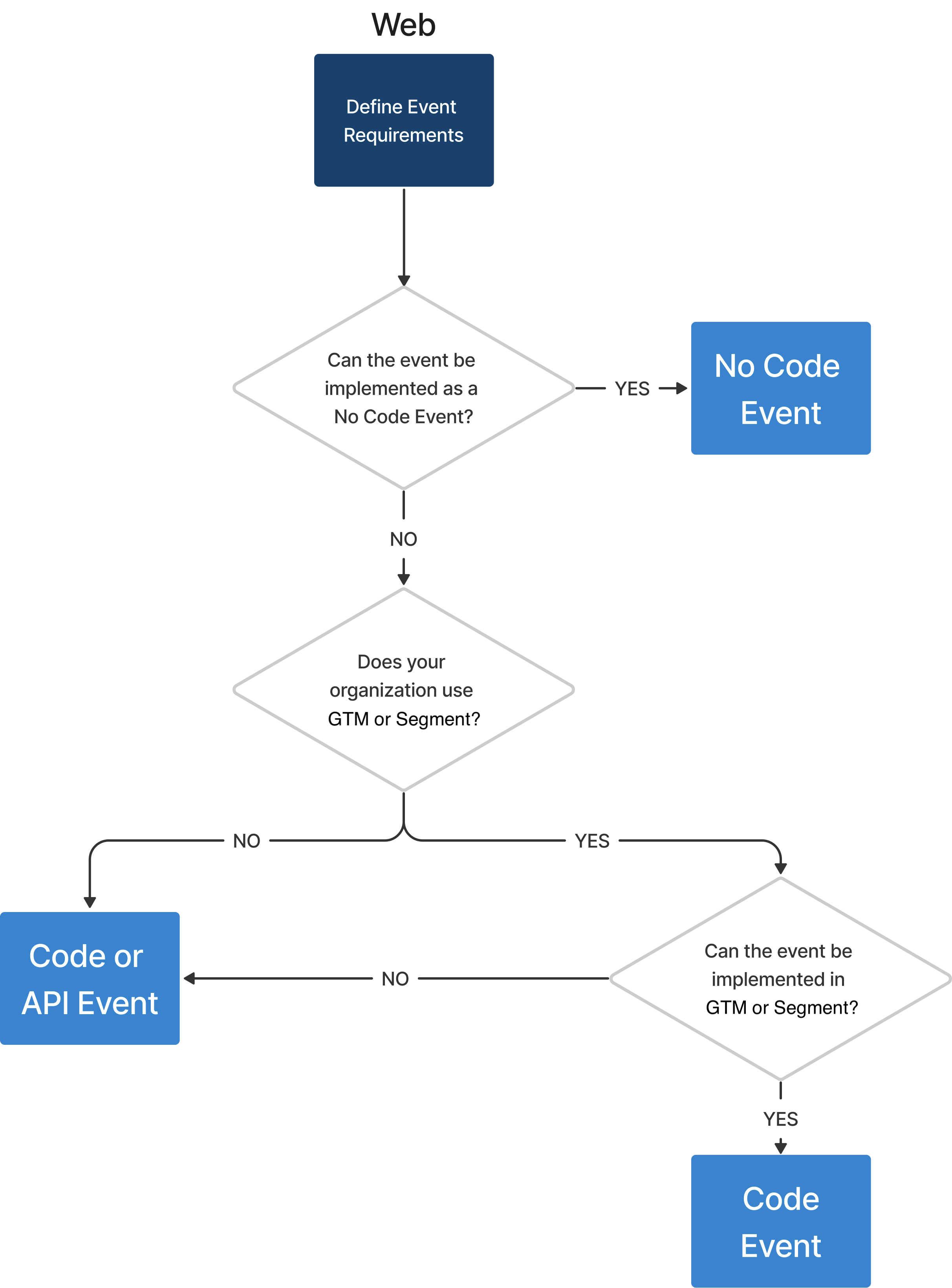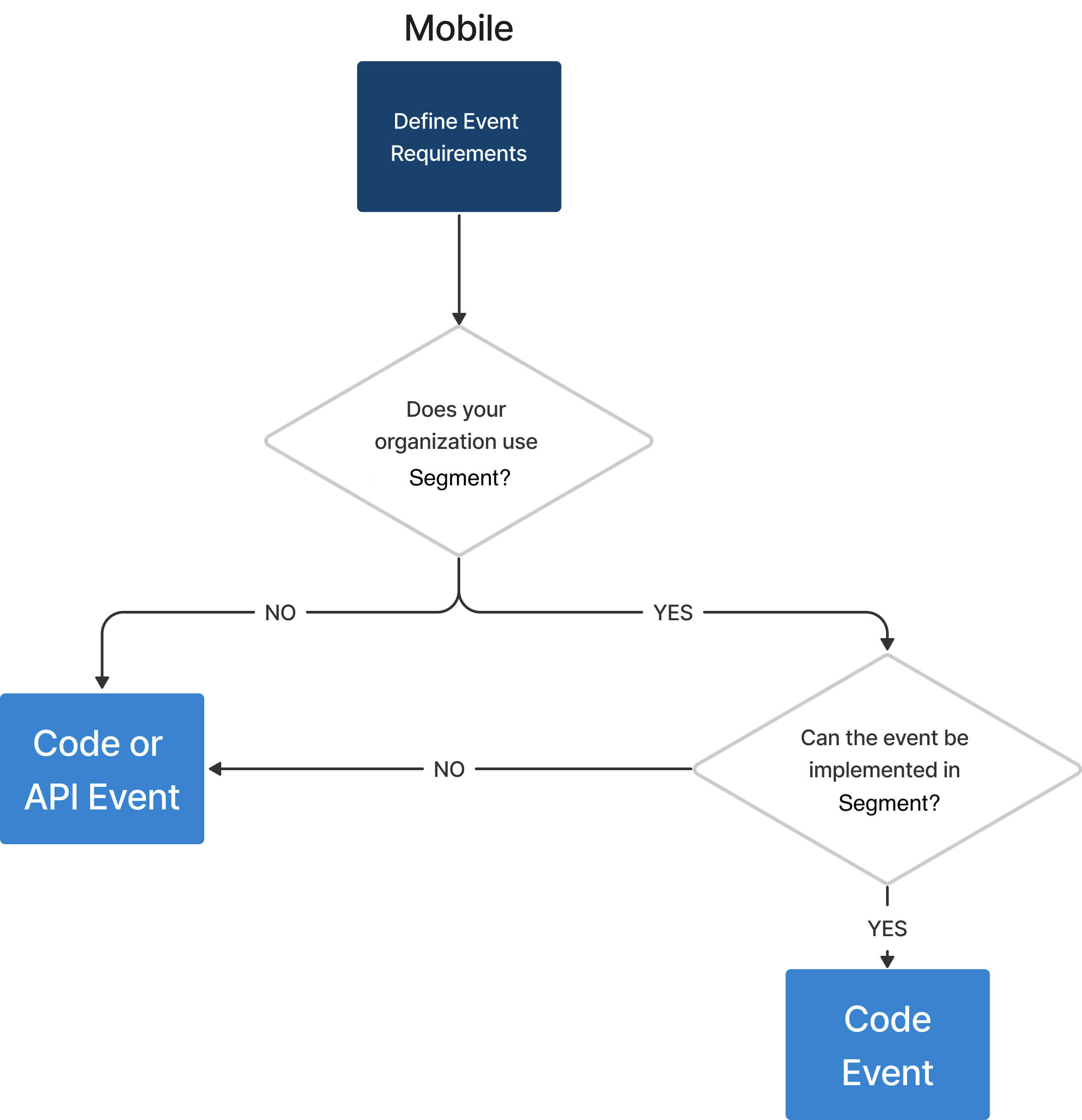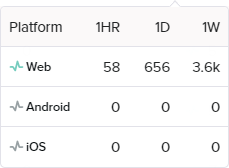Events
In Sprig, Events are used to Trigger a Study. They cause your Study to be displayed to the user. All Web and Mobile studies require an event as a Trigger. Events can also be employed as an audience Filter, allowing you to refine further who is eligible to respond to the Study.
An Event is an action or occurrence in your website or application that allows you to track your users' behavior. Examples of Events include:
- Visiting a page
- Clicking or interacting with a button
- Scrolling to a specific point on a page
How to determine what kind of event you need?
Sprig offers several different solutions on ways to deploy events in your environment. Deciding what kind of event to implement is dependent on study requirements and technological factors:
- What kind of action is it? Is it in a simple UI action like clicking a button or some higher-level concept like signing up for a new subscription? A No-Code event might support simple UI action but might not support a more complex semantic.
- What platform do you intend to launch your Study? Web studies support No-Code events, but mobile studies do not. Sprig Long Form Surveys and Sharable Link Studies do not support events.
- How good are your coding skills, and do you have access to the code? You may have to rely on a developer to implement your code event, or you may have access to GTM or other integration and not depend on a developer.
- Is it an event or an attribute? For example, do you want the Study to be triggered when the visitor completes the new subscription action, or would you like it to occur at a different time and only study those customers who have recently enrolled in a new subscription?
You could use two example workflows to determine what event type you need for Web and Mobile studies.


Where You Can Use Events
Configuring Trigger and Filtering events are supported in the Sprig Application (No-Code), the Web and Mobile SDKs, Google Tag Manager, and Segment. The API only supports events for filtering. CSV Import does not support events.
Event Type | Trigger | Filter |
|---|---|---|
Sprig Application (No-Code) | ✅ | ✅ |
Web SDK | ✅ | ✅ |
Google Tag Manager | ✅ | ✅ |
Mobile SDK | ✅ | ✅ |
API | ❌ | ✅ |
Segment Actions | ✅ | ✅ |
Segment Classic | ❌ | ✅ |
Adding Events
Web and Mobile studies require events to track user behavior to display studies at the appropriate moment. Link studies do not require events because they are delivered to respondents asynchronously. You can configure Sprig to listen for or receive events in two ways; either:
- Using the Sprig app, or
- Directly in the Website or App code where you launch your studies.
Events configured through the Sprig app are No-Code events. Events configured in the Website or App where you want to launch your studies are Code events.
Editing and More Info
- In the Navigation Pane, click Events.
- Click on the Event that you want to view.
- The Display Name and Description may be changed.
- For No-Code event, the trigger interaction can be toggled between Page URL, InnerText and CSS. The Page URL pattern can also be edited.
- For Code event, the Key cannot be modified as an external source generates it.
The Display Name updates the event label throughout Sprig; you can use it to provide a more readable label than Key.
Archiving
Archiving an event stops the Event, triggering studies. Events cannot be archived when associated with an in progress study. You will need to pause, archive, or complete the study related to that Event to archive the Event. You can unarchive a previously archived study.
InfoUnlike pausing a Study, archiving an Event also halts the MTU count.
- In the Navigation Pane, click Events
- Make sure the filter is set to Active Events.
- Click the check box next to the Event.
- Click Archive.
- Click Archive a second time when prompted.
Unarchiving
Similarly, if you want to restart using an event, you can unarchive a previously archived event.
- In the Navigation Pane, click Events
- Make sure the filter is set to Archived Events.
- Click the check box next to the Event.
- Click Unarchive.
Sorting
- In the Navigation Pane, click Events
- Click on the column header to sort the Events
- Click on the column header a second time to reorganize the sorting order of the Events
Filtering and Searching
- In the Navigation Pane, click Events
- Click All Sources and select the source to view.
- Click Active or Archived to select which events to view.
InfoIf you select Web No Code Events as a source to view, if present, events from Segment Web and Google Tag Manager sources will also be included.
Inspecting and Diagnosing
- In the Navigation Pane, click Events.
- To learn more about how often the event is firing, hold the pointer over
 diagnostics in Usage.
diagnostics in Usage. - If the diagnostics is grey
 , your event is either not added correctly or has been turned off from your website, web application, or mobile application.
, your event is either not added correctly or has been turned off from your website, web application, or mobile application. - If the diagnostics is green
 , your event is being tracked and is available for triggering or filtering a study.
, your event is being tracked and is available for triggering or filtering a study. - The following tooltip will be displayed:

Diagnostics Tooltip
If you are using other platforms, for example Segment, they will also be displayed in the tooltip.
Updated about 1 month ago
